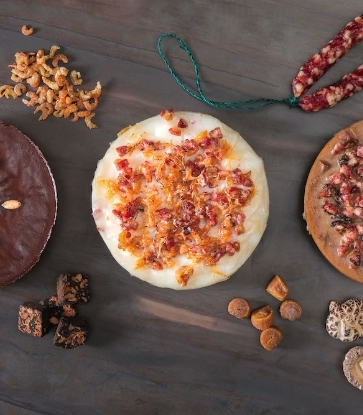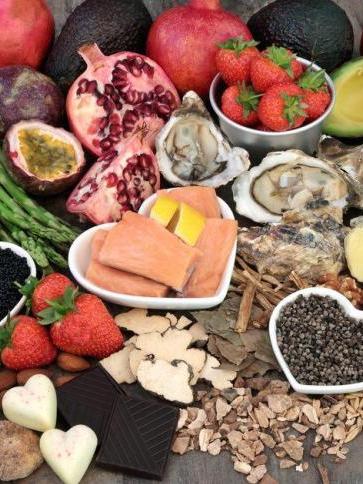Since it’s such a symbol of the festive season, dried shiitake is naturally a popular gift for Chinese New Year. But here comes the question: As you take a walk down the shops in Kennedy Town selling dried Chinese gourmet ingredients, pile after pile of mushrooms in all sizes and thickness, wait. Choosing the most appropriate mushrooms for your use isn’t always so easy. We got in touch with someone who has extensive experience in this field to walk us through what we should look for.

Mostly imported from Japan and China, there are many varieties of dried shiitake with varying characteristics. Lee gave us an overview below:
The dried shiitake mushrooms available in Hong Kong can be catergorised by their origins and forms. Most of them are imported from China, followed by Japan and Korea. Shiitake mushrooms grow around trees and are nourished by them. The nutrients, along with weather, determine the form of the mushrooms. There are more than 10 types of shiitake based on their key traits. From the highest quality to the lowest, they are flower mushrooms, thick mushrooms and winter mushrooms.
- Flower mushroom: the mushroom cap bears apparent cracks (locally known as “baau fa”). It’s priced at $300-400 per catty (about 600 grams in Hong Kong).
- Tea flower mushroom: the cap of tea flower mushroom is less scored. It’s priced at $200-300 each catty.
- White flower mushroom: This is the highest rated shiitake because it has the greatest level of “baau fa.” It costs $500-700 per catty.
- Inch mushroom: Inch mushroom is so called because it’s less than one inch in size; the inch mushroom with “baau fa” is called flower inch mushroom. The price level is around $200-300 per catty.
- Thick mushroom: It has a thicker mushroom cap than other varieties. Thick flower mushroom carries “bauu fa.” Prices range from $200 to $300.
- Winter mushroom: This variety doesn’t have any cracks on the surface. It costs $100-200 per catty.

Other than a smooth texture, good mushrooms should smell rich and sharp. Growing from a quality, well-nourished tree, the shiitake would understandably be bigger and taste better. In addition, cold weather helps the shiitake to conserve nutrients. If there is frost or low humidity, the mushroom cap would crack and its fragrance would be intensified. That’s why a large, thick and rough mushroom with “baau fa” is more prestigious.
Origin and storage time are also important factors of consideration. In general, the Japanese shiitake is the best. Korean shiitake ranks second, and the Chinese ones third. The mushrooms are best eaten within a year of its harvest. The longer it’s kept, the more the fragrance disappears. Further to that, even dried shiitake carries a small amount of moisture. It could get mouldy after for an extended period.

It depends on how the mushroom is paired with which food. For steamed fish, it’s not fitting to use shiitake that tastes too strong because it would overshadow the fish’s flavour. A lighter mushroom would be better in this case. Old Cantonese recipes call for a shiitake variety named “Xiangxin.” It’s grown in a short amount of time due to warm weather, with the temperature rising above 20°C for more than 10 days in a row. Xiangxin’s texture is cheaper ($70/catty) and less soft compared to flower mushroom. But the light fragrance is a great match to steamed fish dishes. If you have large and thick mushrooms in hand, braising is the best method of preparation to keep them smooth and tender.

Between two mushrooms of the same size, choose the one that is lighter. Dried shiitake has 5 to 7 percent of moisture, and heavier mushrooms have higher moisture content. When the humid weather hits, those would be more prone to get moldy. Lightweight mushrooms indicate the drying process was done better, and its aroma would be more stable. While you’re at the shop, try to pick up the mushrooms and compare them.
Is Japanese Shiitake Superior to Others?
That’s correct. In Japan, the mushroom growers drill holes in a whole piece of wood and plant the hyphae of the shiitake inside. Afterwards, they move the wood to a humid spot in the forest and water it regularly. In cold weather, the growers would cover it up to ensure the steady growth of the shiitake.
The other regions grow shiitake on mixed wood shavings in a plastic bag, which is placed in the greenhouse. The benefits of this approach are the short growing time and large amount of output. But that can’t compete with the nutrients Japanese shiitake get from an intact piece of wood and the natural surroundings. You can smell the difference when you put the Japanese shiitake close to your nose.






















